
Alten Puskas FerencFußballStadion in Budapest, Ungarn Stockfotografie Alamy
Puskás Aréna is a football stadium in the 14th district (Zugló) of Budapest, Hungary. The stadium's construction started in 2017 and was finished before the end of 2019. It is an all-seater with a capacity of 67,215. The Hungarian Football Federation meets all UEFA and FIFA stadium requirements, and was awarded 4-stars by the UEFA.

FerencPuskásStadion
Old Puskas Ferenc Stadion Panoramic From 2008 - Magyarfutball.hu - Sulyok Dániel [CC BY-SA 3.0], via Wikimedia Commons. As with all such new stadia, the history of the Puskás Aréna is still to be written. Even so, there's still a fair amount that we can tell you about it. When the idea of building a new stadium was first mooted in 2011 the.
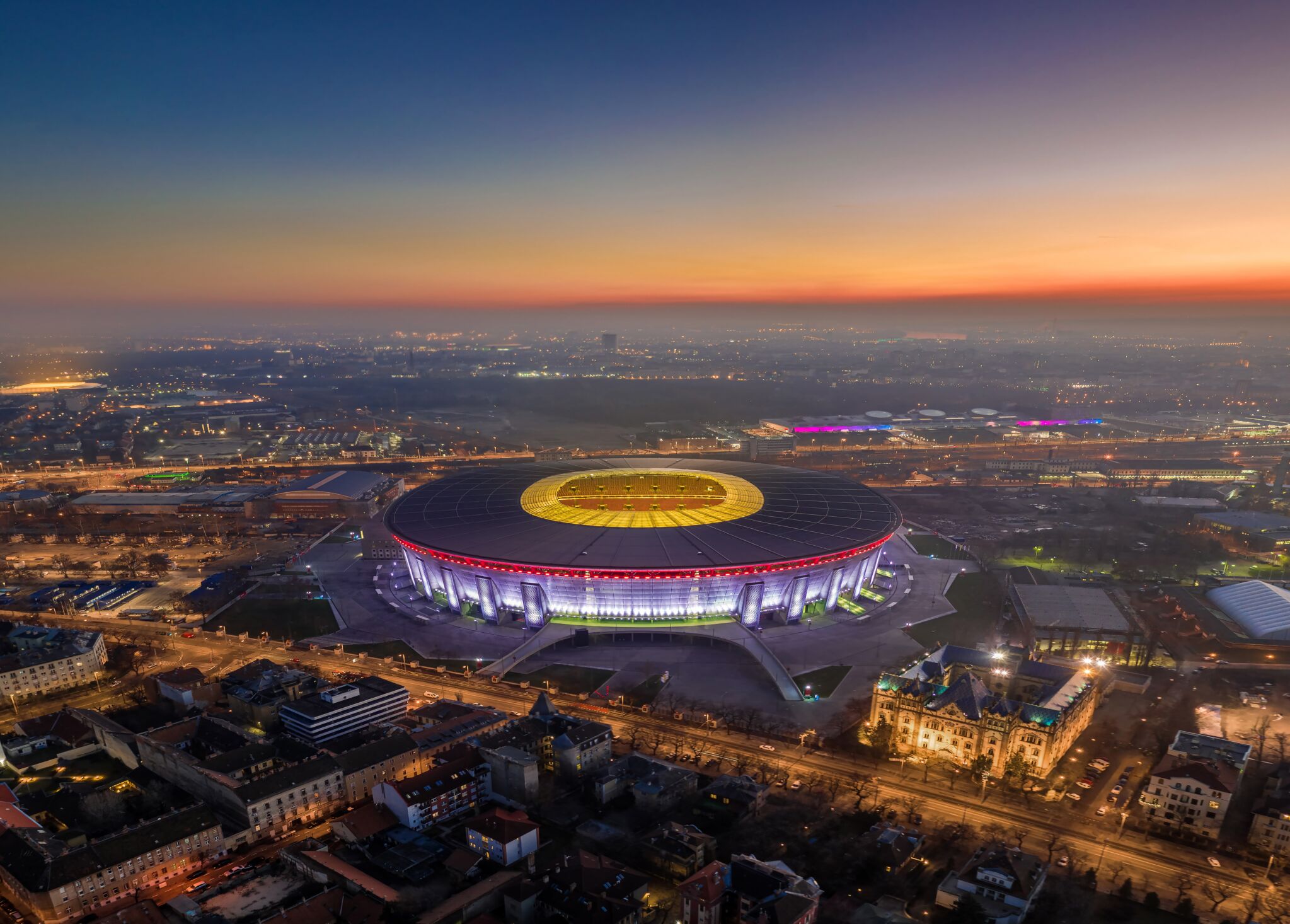
Puskás Aréna Képek, Leírás, Vélemények Szallas.hu programok
By Football Tripper. Last Updated: July 19, 2021. Share Stadium Guide. Ferenc Puskás Stadium is the multi-purpose home of the Hungarian National Team, having hosted football matches as far back as 1953. It was renamed from Népstadion in honour of the former Real Madrid striker, and Hungary's greatest ever football in 2002.

Puskas Arena Budapest Sitzplan Puskás Aréna Stadion in Budapest Aréna retro party 2 új
A rare case of a Communist-era name hanging over after the régime change of 1989 - leading daily Népsport became Nemzeti Sport, for example - the Népstadion, the 'People's Stadium' was built for the people, by the people. Even Puskás himself, soon to be a huge world star after Hungary beat England at Wembley in November 1953, was photographed lugging a wheelbarrow of bricks.

Ottawan D.I.S.C.O. (Retro 80's Disco Party, Puskás Stadion) YouTube
Pancho Aréna is a stadium in Felcsút Hungary. It is primarily used for matches and serves as the home stadium for Puskás Akadémia FC. Between 2015 and 2018, the stadium also hosted the three-time champions Fehérvár FC due to the reconstruction of Sóstói Stadion. On 26 April 2014, the first Hungarian League match was played at the.

Puskas Arena Budapest Le Puskás Aréna à Budapest (Groupe F) It is a metal mesh with a total
So goodbye to the Puskás Ferenc Stadion, hello Puskás Aréna. Like its predecessor, the Puskás Aréna honours the most treasured legend of the Hungarian game, former Honvéd and Real Madrid.
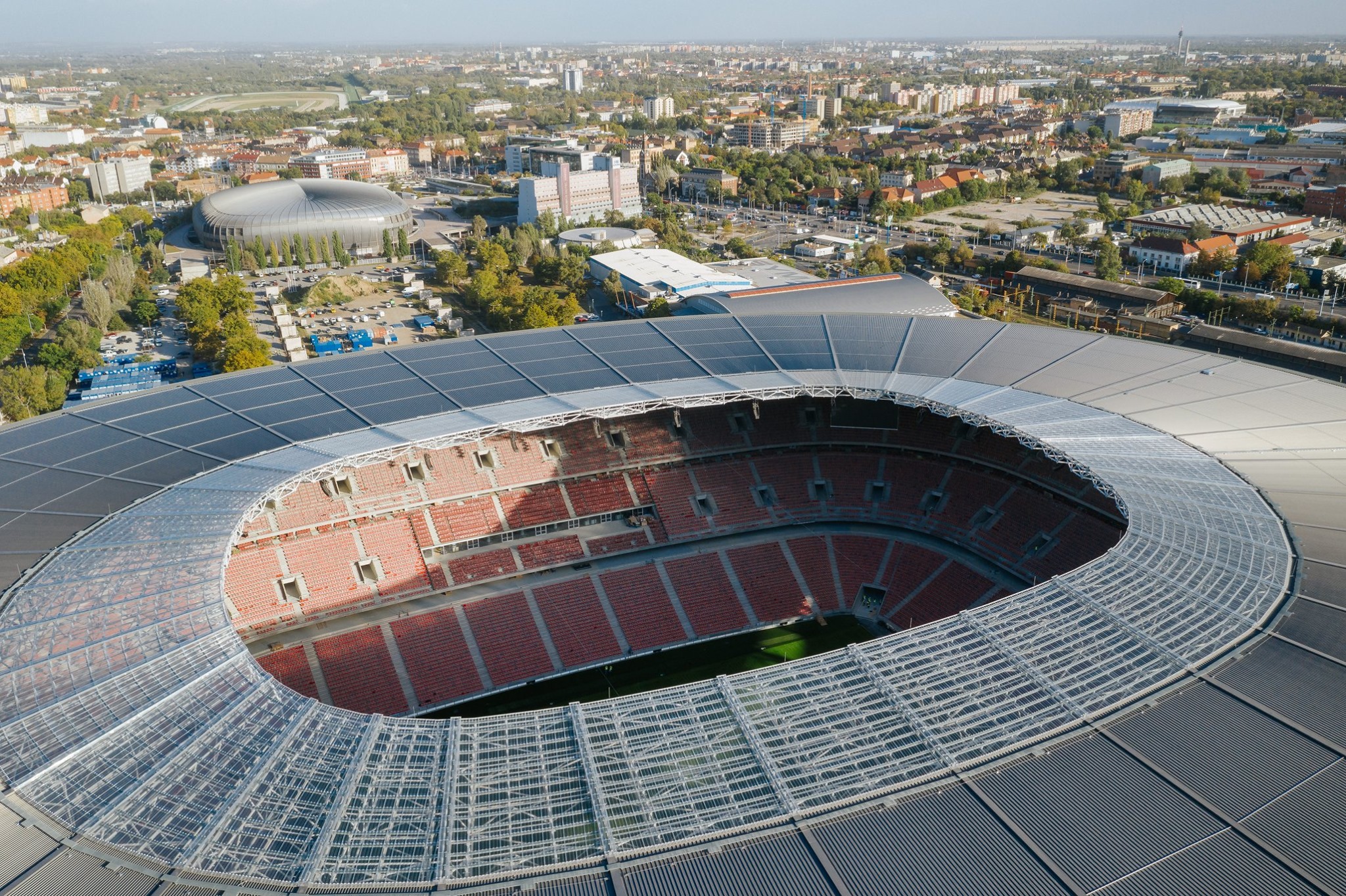
Budapest, Puskás Arena Here is everything you need to know! Daily News Hungary
Office Market. The Centrale multifunctional building complex will be built at one of the city's main intermodal hubs, the Puskás Ferenc Stadion metro station in the middle of the Hungária körút office corridor, according to a press release sent to the Budapest Business Journal. The 29,000 sqm GBA development will offer commercial and.

Már 3 éves a Puskás Aréna Portfolio.hu
The Puskas Arena officially opened on 15 November 2019 with a friendly match between Hungary and Uruguay (1-2). It came at a cost of 415 mln euro. The stadium will be one of the playing venues of the 2020 European Championships, hosting 3 first stage group matches and one round of 16 match. The Puskas Arena has been selected to host the 2022.
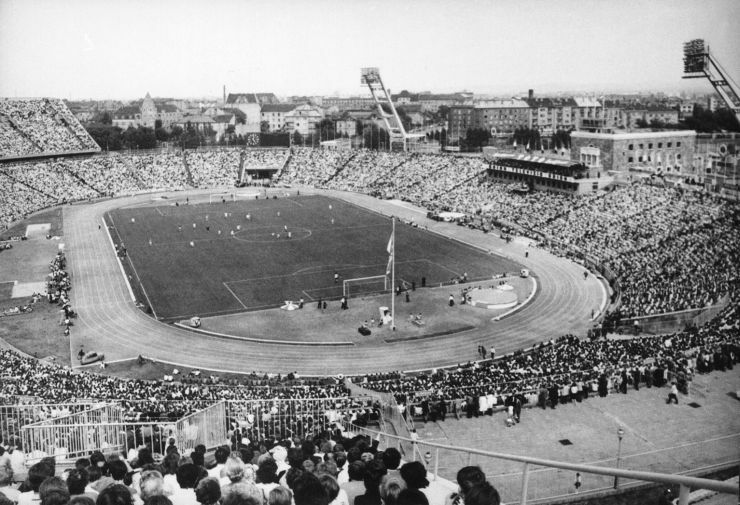
The iconic Puskás Stadium opened 66 years ago! Daily News Hungary
On the borders of the XIV, X, and VIII residential districts, the neighbourhood of Puskás Ferenc metro station is an extremely busy transport hub. With a football arena, stadium, offices, event centre, national bus station, trams, and even a shopping mall nearby, over 100,000 vehicles traverse this area, and 70,000+ pedestrians pass daily.

Ferenc Puskas Stadium/HU EM Budapest 4x4 Football stadiums, Soccer stadium, Stadium
Budapest, Hungary - May 20, 2023. View over Puskas Arena stadium in Budapest, Hungary. Puskas Arena is a football stadium at Dozsa Gyorgy ut 1 in the 14th district (Zuglo) of Budapest, Hungary. The stadium's construction started in 2017 and was finished before the end of 2019. It is an all-seater with a capacity of 67,215.
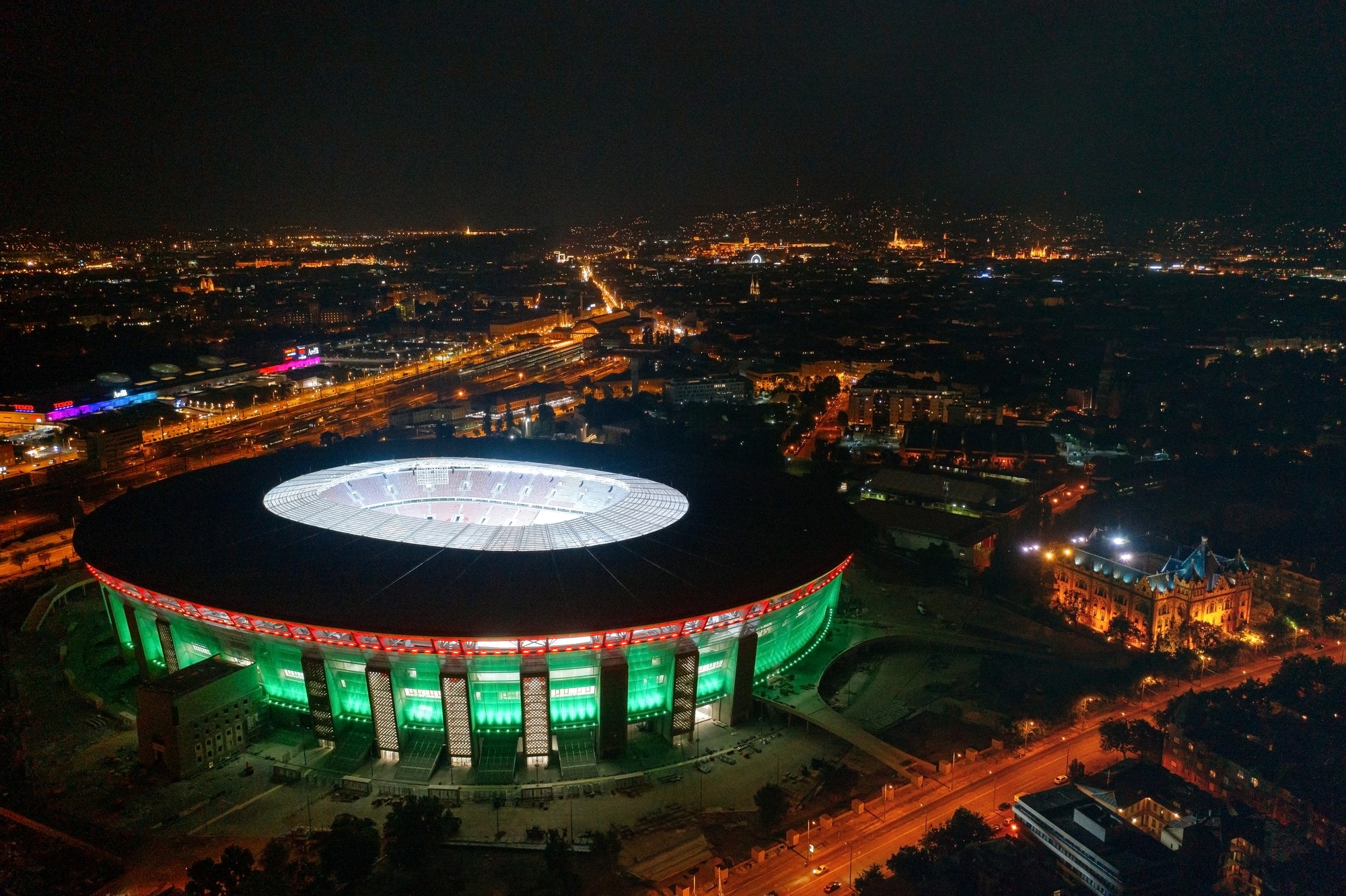
Puskás Aréna
The Ferenc Puskás Stadium ( Hungarian: Puskás Ferenc Stadion ), or formerly People's Stadium ( Népstadion) was a multi-purpose stadium in the 14th district (Zugló) of Budapest, Hungary. It was situated between the Puskás Ferenc Stadion and the Keleti pályaudvar metro stations. It was used mainly for football matches.

Retro Puskás Stadion
Built on the site of the former Ferenc Puskás Stadium, this modern sporting gem showcases the enduring legacy of a national hero. A Local Community's Pride and Joy. The Puskas Arena has seamlessly embedded itself within the fabric of the local community, becoming a cherished symbol of national pride. With its dazzling architecture.

Puskás Stadion Hetedhétország
I have been many times here. I have visited Rolling Stones concert, Tina Turner concert and many football games. The stadium is a retro-type layout, but the sound and atnmosphere is fantastic even with fewer attendance. I have been full house game here 3 times (Hngary vs Italy, Hungary vs Portugal, Hungary vs. Turkey). Nice experience.

Ferenc Puskas sport arena in Budapest, Hungary
A Puskás Ferenc Stadion egy állomás a budapesti M2-es metróvonalon a Pillangó utca és a Keleti pályaudvar között. 1970 és 2003 között Népstadion, 2003 és 2011 között Stadionok, 2011-től pedig a Puskás Ferenc Stadion nevet viseli. Jellemzői Az állomáson négy vágány található, amelyet két szigetperon szolgál ki..
Puskas Arena by Codina Architectural DICON
After September's UEFA Super Cup, we've taken an in-depth look at the Puskas Arena. Location: Budapest, Hungary. Team: N/A. Built: 2019. Capacity: 67,215. Built on the site of the old 100,000-capacity stadium of the same name, the new Puskas Arena hosted the 2020 UEFA Super Cup Final between Bayern Munich and Sevilla in September.
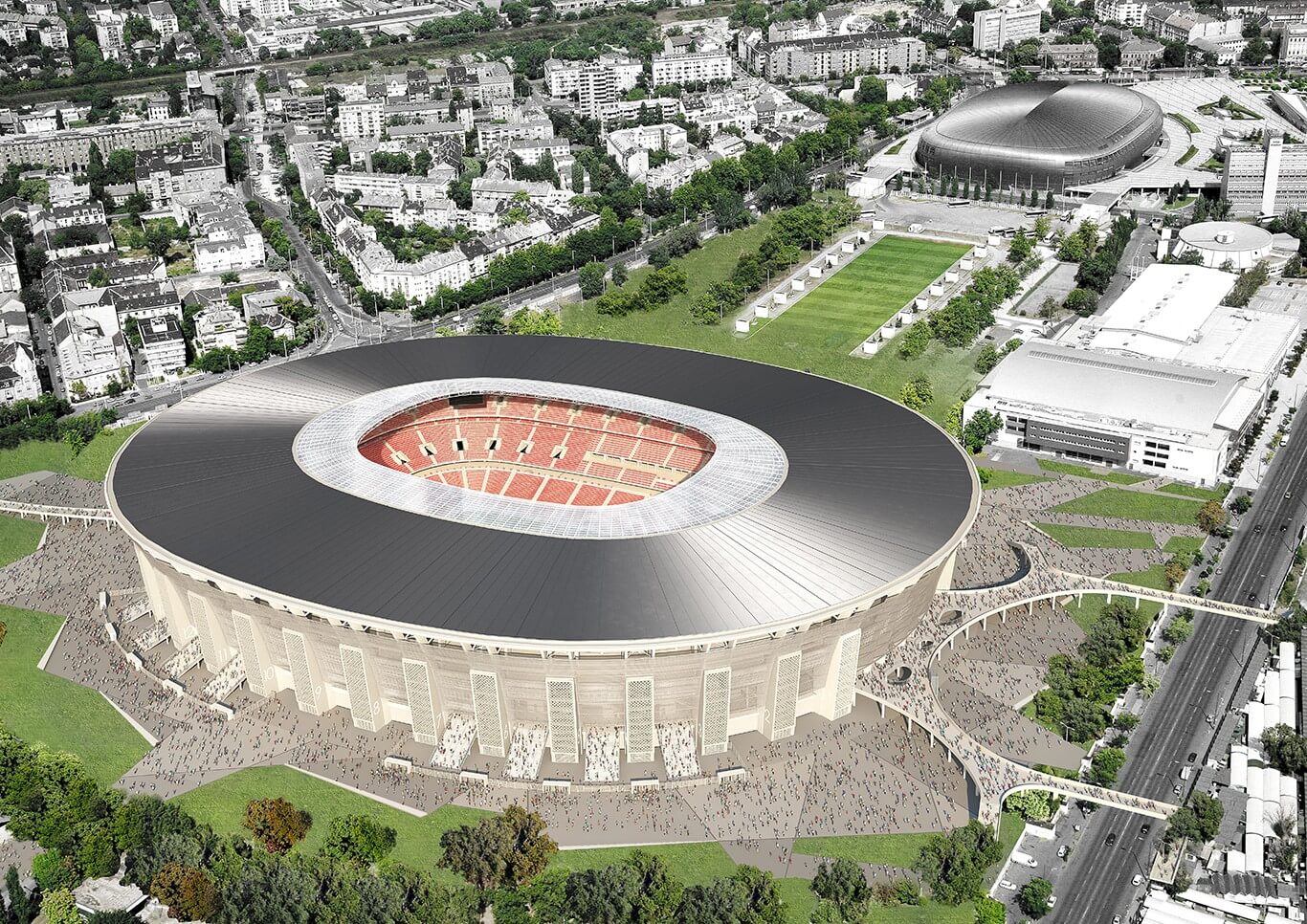
Puskas Arena Budapest Sitzplan Puskás Aréna Stadion in Budapest Aréna retro party 2 új
Puskás Ferenc Stadion (Puskás Aréna) is a station of the M2 (East-West) line of the Budapest Metro. Puskás Aréna is located here, as well as the Budapest Sports Arena . It was first opened on 2 April 1970 as part of the inaugural section of Line 2, between Deák Ferenc tér and Örs vezér tere [1] and named Népstadion (English: People's Stadium ) until 1 January 2004.